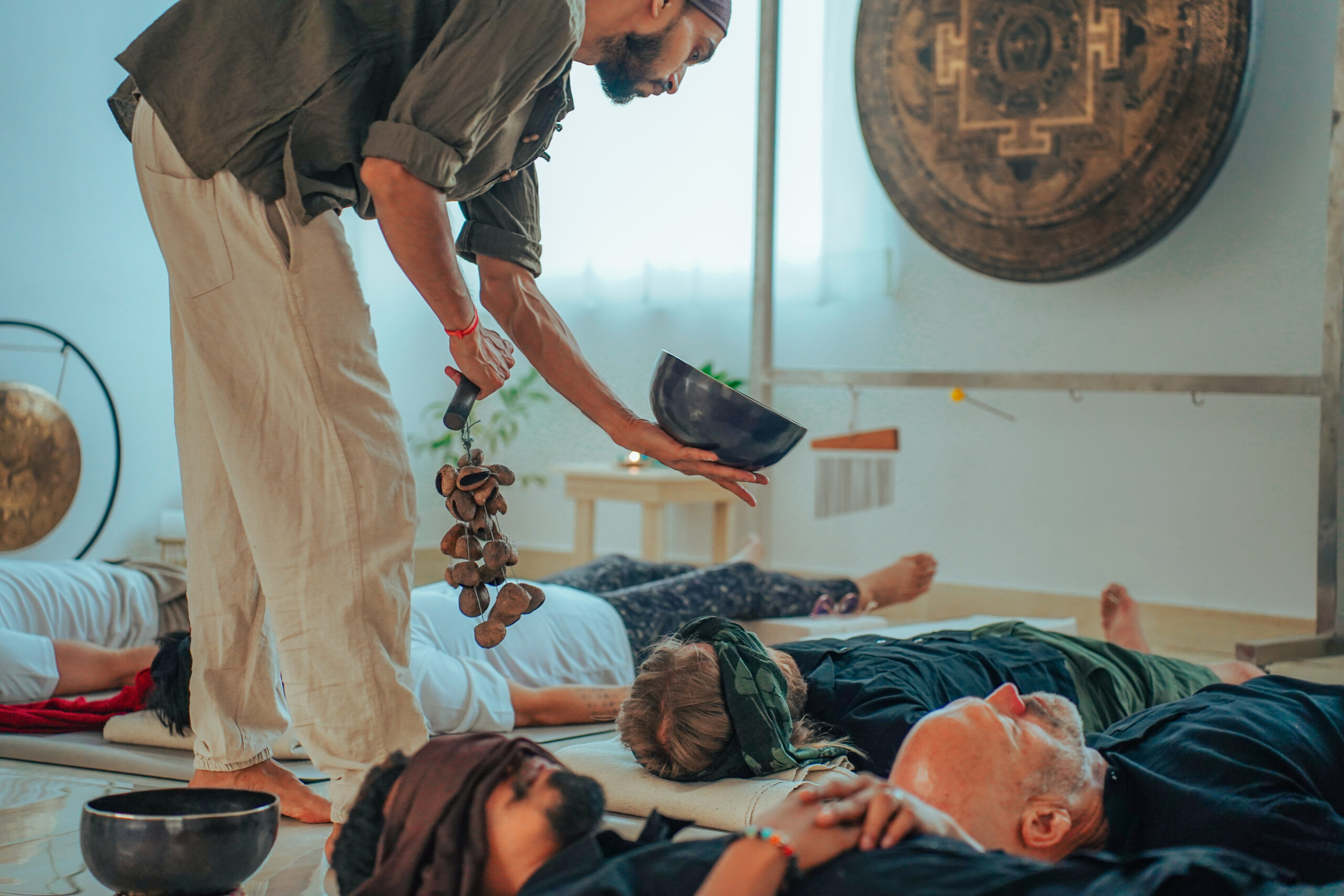Sound Healing for Better Sleep
Sound Healing for Better Sleep: Techniques and Tips for a Restful Night
Quality sleep plays a vital role in our overall well-being, yet many struggle to find restful nights. Thankfully, sound healing offers a natural approach to promote deep relaxation and improve sleep quality. In this article, we will delve into the science behind the connection between sound and sleep, explore various sound healing techniques, and provide practical tips to seamlessly incorporate them into your sleep routine for rejuvenating nights of rest.
The Science of Sound and Sleep:
Sound has a profound impact on our brainwaves and sleep cycles. During sleep, our brain transitions through different stages, each characterized by distinct brainwave patterns. Carefully chosen sounds and frequencies can help induce relaxation and guide the brain into the desired sleep state. Research has demonstrated that soothing sounds effectively activate the parasympathetic nervous system, facilitating deep relaxation and reducing stress levels, which are crucial for experiencing high-quality sleep.

Join Rishikesh Yog Temple (best yoga school in rishikesh) for 200 hour yoga teacher training in rishikesh, 300 hour yoga teacher training in rishikesh, 500 hour yoga teacher training in rishikesh. Book Your Course Now!!
Sound Healing Techniques for Enhanced Sleep:
Guided Sleep Meditations:
Guided sleep meditations combine gentle sounds, such as tranquil music or nature ambience, with soothing voice guidance. They assist in quieting the mind, releasing tension, and facilitating a peaceful transition into sleep. Many apps and online platforms offer purpose-built guided sleep meditations designed to promote deep, rejuvenating sleep.
White Noise and Nature Sounds:
White noise, such as the sound of a fan or static, can effectively mask background noise and create a consistent, calming sleep environment. Nature sounds, such as ocean waves, rainforest serenity, or falling rain, provide a soothing backdrop that promotes relaxation and effectively blocks out disruptive noises.
Singing Bowls and Gong Therapy:
Singing bowls and gong therapy produce rich, resonant tones that induce a profound state of relaxation. The vibrations from these instruments permeate the body, soothing the nervous system and cultivating a sense of tranquility. Many individuals find the gentle sounds of singing bowls or gong therapy conducive to experiencing deep and restorative sleep.
Binaural Beats and Isochronic Tones:
Binaural beats and isochronic tones are sound frequencies played in each ear at slightly different frequencies. This technique stimulates the brain to synchronize with the desired frequency, promoting relaxation and improving sleep quality. Numerous recordings of binaural beats and isochronic tones specifically tailored for sleep and relaxation are readily available.
Sound Baths and Soundscapes:
Sound baths involve immersing oneself in a live or recorded session featuring various sound healing instruments, such as crystal bowls, drums, or chimes. The harmonious sounds and vibrations create a meditative experience, inducing deep relaxation and cultivating a peaceful state conducive to sleep. Soundscapes, which are recordings of natural or ambient sounds, can also be used to create a serene sleep environment.
Tips for Incorporating Sound Healing into Your Sleep Routine:
Establish a Calming Sleep Environment:
Minimize external noise by using earplugs or a white noise machine. Ensure your bedroom is quiet and free from distractions. Consider utilizing blackout curtains or an eye mask to create a dark environment conducive to sleep.
Select the Appropriate Sound Healing Tools:
Explore different sound healing instruments, recordings, or apps to find the ones that resonate with you. Experiment with various sounds and frequencies to determine which ones have the most calming effect on your mind and body.
Establish a Bedtime Ritual:
Develop a relaxing routine before bed that incorporates sound healing practices. This can include listening to guided sleep meditations, playing calming music, or engaging in a brief sound bath session to unwind and prepare your mind for sleep.
Combine Sound Healing with Other Relaxation Techniques:
Consider synergizing sound healing with additional relaxation techniques such as deep breathing exercises, aromatherapy using soothing scents like lavender, or gentle stretching to enhance the overall relaxation experience and promote restful sleep.
Case Studies and Success Stories:
Real-life examples of individuals who have successfully integrated sound healing into their sleep routine can serve as inspiration and motivation. Their experiences can illustrate the positive impact sound healing has had on their sleep quality and overall well-being.
Sound Healing for Specific Sleep Issues:
Explore how sound healing can address specific sleep issues such as insomnia, sleep disorders, or nighttime anxiety. Discover how tailored sound healing techniques can complement conventional treatments and promote more restful sleep.
Precautions and Considerations:
While sound healing is generally safe for most individuals, it's important to consult with a healthcare professional if you have any underlying sleep conditions or concerns. Additionally, follow safe usage guidelines for sound healing tools and techniques to ensure a positive and secure experience.
Suggested Read- My Experience at Yoga School in Rishikesh
Incorporating sound healing into your sleep routine can be a transformative practice that enhances the quality of your sleep. By understanding the science behind sound and sleep, exploring various sound healing techniques, and implementing practical tips, you can create a peaceful environment that promotes relaxation, tranquility, and ultimately, rejuvenating nights of rest. Embrace the remarkable power of sound healing and embark on a journey towards enhanced sleep and overall well-being.




Comments
Post a Comment